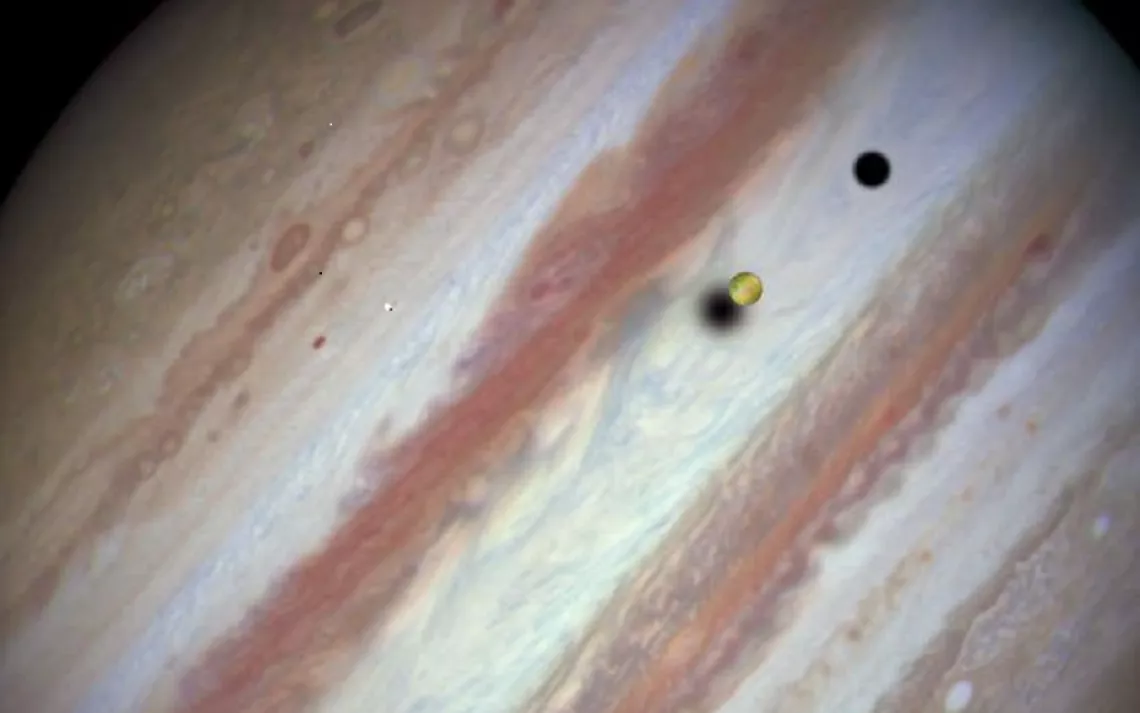March Observing Highlight: Moons in Eclipse

Moons transit Jupiter and cast their shadow on the giant planet. | Photo courtesy of NASA
Jupiter is the planet to watch this winter because it is up and visible in the evening sky just when observers are getting their telescopes out. On March 8, it reaches opposition at a bright magnitude -2.5, and it rises at sunset and sets at sunrise.
The best aspect of Jupiter to observe is its four Galilean satellites, which are found in different configurations as they orbit around the planet each night. Oftentimes, one or more of the moons can’t be seen because of its location behind or in front of Jupiter. But when a moon passes over Jupiter’s surface, its shadow appears as a black disc that is easier to spot. And on some occasions, two shadows can be seen at once on Jupiter.
These events are called double shadow transits. A number of them occur during evening hours in March and can be observed with amateur telescopes; some viewers can even see them with binoculars. For example, on March 7 just after sunset, if you live in the east, you can watch lo and Europa plus their shadows crossing the face of Jupiter. However, in the west the event is mostly over by the time Juptier rises.
March 14 after sunset provides a better opportunity for those on the West Coast to view a double shadow transit when Europa and Io pass in front of Jupiter a second time and their black shadows stand out clearly.
A third opportunity is on the evening of March 21. Hope for clear skies on one of those nights to catch a solar system eclipse that not many have seen.
Clocks and Calendars
On March 13, we change our clocks to daylight saving time. The longer daylight in the evenings is welcome to many, but it does mean it takes longer for the stars to appear.
The spring equinox for the Northern Hemisphere occurs on March 20 at 12:30 A.M. EDT, or 9:30 P.M. PDT on March 19.
On March 23 at 8:01 A.M. EDT, the moon will be full, meaning both the night before and the evening of the 23rd will offer a big, bright moon. Take a good look when you wake up on the morning of March 23. The moon will be setting in the west after transiting the sky overnight. Does it look slightly dimmer to you? The moon will undergo a penumbral eclipse when it passes through the outer edge of the earth’s shadow. Most people won’t even notice a difference.
 The Magazine of The Sierra Club
The Magazine of The Sierra Club







